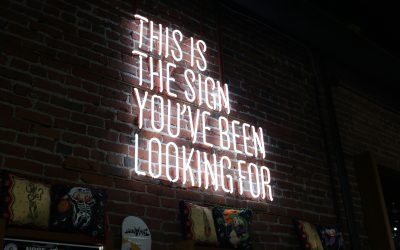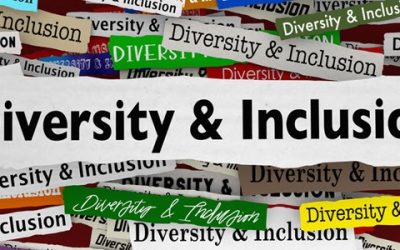Statement on the company website is a start, but it is not enough. Diversity at workplace does not just happen. It needs a strategy, business- and action plans. It needs follow up, measurement matrix and specific goal posts. Most of all it needs commitment from the senior leaders in the business.
Few years back I did an HR Audit for a mid-size medical company. The HQ of the company, located near Helsinki was the most homogeneous office I had ever seen, everyone working in that office came from the same background, had gone to the same schools, lived in the same area and quite often, were related to each other in one way or another. They had a company newsletter that was done in Finnish which was considered key to employee engagement and internal communication. When I asked how the colleagues in the new Beijing and Frankfurt offices read the newsletter – no-one at the HQ could answer my question. The newsletter was published in Finnish.
The need to diversify in this company came through business needs and strategic decision to expand internationally. As the client base became more diverse, the team had to as well. As this was done, and new offices were opened in international locations and the company opted for matrix organization that kept the HQ in Finland. With this organisation model, many of the team leaders came from Finland and team members from other countries. As the teams expanded, some leaders leading multi-office, multicultural teams took on to the new international role like fish to water – where as other managers struggled. For many experienced leaders and managers, managing a diversified, international team meant completely new challenges and taking on a completely new leadership style.
I have become acutely aware how fashionable it has become to have a diversity statement in the company website, in the recruitment portal and in the official company intro PowerPoint presentations. The rise of the DEI acronym during the pandemic has resulted in many, more bold statements. And yet, the sad fact is, that the reality between the statement and actual, real actions to promote diversity are so very often non-existent. My request to the HR leaders and colleagues out there – step out of the bubble of thinking that diversity statement is yet another HR sloganto include in the company presentations. If you represent a company that has real issues with representation and diversity in your workforce – get ready for actual change management, challenging the status quo and quickly taking this matter to the constant focus on the C-suite meetings.

During the pandemic I was interviewing for a senior talent management role in a corporation with HQ still in Finland. I had heard so many great things about this company and the VP of HR was very dynamic, widely respected. I met the HR team and I really wanted to work for this company – their diversity and inclusion statement was bold and ambitious and with my background, I thought I could really contribute to their international, global HR agenda that had international growth in focus. My last interview was with the CEO. Within few minutes into the interview, after finding out which part of Finland my mothers side of the family comes, he made offensive comments about the people coming from that part of the country. I laughed the insult off in the interview in a state of shock, but needless to say was very deflated and felt diminished, sad for days after. It was so clear, that as long as this CEO was leading the company, the fantastic diversity and inclusion plans that the HR team had are never going to be a reality.

The benefits of having a diverse workforce are evident and unquestionable, but if you still need convincing, I will add few recent articles to the end of this blog. Don’t get me wrong, many companies already have diversity and inclusion in place and have moved on from a statement to actual, transparent actions to promote diversity and inclusion, these usually are the most successful companies out there. And by successful, I mean not only staff happiness but also customer satisfaction, new business leads, profit instead of loss and actual, higher dividends to stake holders.

The most diverse team that I have worked with was at Doha, Qatar whilst I worked for the luxury hotel sector. Although it was over a decade ago, it still shines in my memory as an example for diversity and inclusion. The property had over 280 keys and nearly 160 residences, large convention facilities, outside catering, 3 restaurants, a popular coffee shop, shisha lounge and 2 nightclubs. It was a busy, busy business. As I took the role of HR Director, other changes in the senior leadership team took place at the same time. A new business plan and sales strategy was put in place. As a leadership team we decided that having as diverse team as possible would be one of the unique selling points; as Qatar was quickly becoming an international hub and the brand attracted customers from all corners of the world, having as many languages spoken as possible by the customer facing team would be a clear business benefit.
The senior leadership team committed to the strategy. As a team, we were very diverse ourselves, not just in terms of healthy gender balance, but age and nationality wise diverse, also by background, work experience and education. So there were many different perspectives and opinions in the team, however, the commitment to making the business the best that it could be was a strong, shared vision. As was the commitment to diversity and inclusion. The benefit of having a diverse team was clearly linked to business success. What followed would have never been achieved without the unified commitment from the senior leadership team ; diversity was a shared commitment. At the end of my tenure at Doha, we had 61 nationalities and 5 different generations represented within the team that had nearly 1000 employees in total.
As the recruitment strategy was formulated it was clear that diversity would not just happen, as leaders we would need to facilitate the diversification of the team. The senior leadership team was unified in the commitment, it was also shared understanding that without the actual inclusion part, long-term, real diversity would not happen. In a luxury service sector where a lot of time and other resources is used to ensure the highest possible quality, turnover of staff is something we all knew to avoid as much as possible. Again, also the business reasons for effective inclusion were clear to all.
A lot of the actual execution of the diversity strategy was down to my HR team, but it would have never been successful without the unified, long-term commitment from our senior leadership team, the executive team as it was then called.Diversity and inclusion was not a HR program, it was the core of the business. Like anything at work that is a success, diversity and inclusion required team effort and as a team, on this matter, we were unified – diversity and inclusion was a shared leadership responsibility.
The learnings I took?
Diversity and inclusion, DEI statement can be a very trendy HR thing to do and to present to the board of directors. HR team can even ensure that recruitment is, for some time, diverse. However, without an actual business plan for inclusion it is never successful. The reality is, the ability to lead diverse team and to enable inclusion is a critical leadership ability. But it should not be taken for granted, like any leadership abilities, for some this is easier than others. And like any company, with serious desire to diversify, the company needs to ensure that effective leadership development plans and measurements are in place to support this ability. Leadership development for understanding diversity and inclusion, and not just understanding but enforcing and enabling, making it a business critical requirement for management ; as said, this does not just happen, it needs to be made happen and leardership development is sometimes the required first step. Ensuring that the leaders are aware and knowledgeable of the clear business benefits for diversity and then inclusion – is this part of the company’s learning curriculum?
Want to hear more what we specifically did to ensure diversity and especially inclusion in the hyper multinational team in Doha? Go on to read the next blog. In the meantime, below a quick self check questionnaire for all business leaders to evaluate where your company is at when it comes to diversity:
- Do you know the actual diversity statistics at your workplace?
- Do you talk about diversity whilst formulating your recruitment strategy?
- Do you measure, follow-up and discuss the workforce demographics as part your monthly HR reporting?
- Do you have a whistleblower system in place to ensure anonymous concerns about bias, discrimination and harassment can be raised and heard?
- Does your company celebrate diversity?
Thank you for reading! Let me know your thoughts on the topic. What is the most diverse team you have ever worked in? Was it successful?
Pirki

Do you need help in getting started? Help with analysing your current HR data and demographics of the team? Or maybe you have already decided to turn that diversity and DEI statement into an actual action plan and want help with the diversity strategy and/or inclusion action plan? Or if you can not get this topic on the senior leadership team agenda and simply need someone to come and facilitate an awareness training in your company – get in touch! This is where I can help.
Still need convincing that diversity equals business success in today’s world? Few recent articles on the topic below.
5 Reasons Why Diversity is Important in the 21st Century – AMP Global Youth
8 Reasons Why Diversity And Inclusion Are Essential To Business Success (forbes.com)






